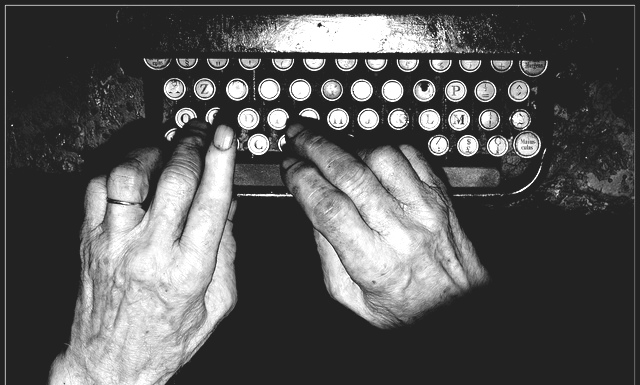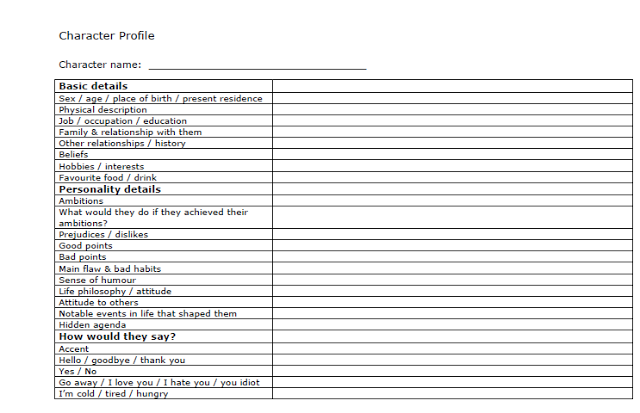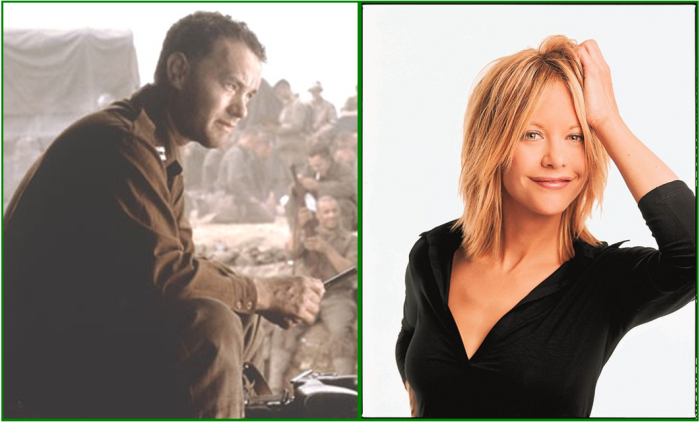Missy’s smooth, tan legs walked on black wedges as a morning breeze gently played with her hair, a deep brown to match her eyes. Although she wasn’t always aware of it, her tongue continued to touch the small scar on her lip from when her mother won, by force, last year’s battle of which skirt she would wear on the first day of high school. On this year’s first day, Missy wore the same denim skirt, but her legs had grown two inches longer since the end of the previous year, and her chest increased about the same. This year, in trade for wearing the skirt, she handed over the lipstick to her mother after plucking it from her Coach purse. As she turned the corner, out of her mother’s view, she quickly unbuttoned the sweater that had been hiding the white cotton top that allowed the red bra to shine through. Welcome to sophomore year.
That’s Missy in about 160 words. We’ve got her hair, eyes, clothes, shoes, legs, and a scar inside her lip. Is that a character? Could be. Perhaps you find her interesting enough so far, or perhaps you’ll find this version of Missy more interesting…
As each step brought Missy closer to the first day of school, her pace softened. She knew that regardless of which teachers or classes were typed on her senior-year schedule, the only factor that would determine between a good or bad day was whether or not she crossed paths with either of the boys who, according to rumors, managed to get her drunk enough to forget her own name after convincing her to sneak away from the July 4th fireworks only two months prior.
Again we have Missy, but only about 80 words. Lacking this time is anything you can “see.” No hair, eyes, clothes, shoes, or scar. Nothing in the way of the kind of character description that most readers enjoy and many writers work to deliver. But what do we really know about this “character”? Which is “better”? Which is more “descriptive”? Depends. What do you really need to know?
I have sat through a good handful of sessions with people who are very certain they are not only writing experts but are able to make me one as well. I have laughed each time these writing “teachers” handed me a form with boxes and lines designed to guide me into creating my character. On these forms were spaces for the exact date and city of birth, same details about immediate family, street address, nickname of the high school mascot, how many people they’ve had sex with, favorite color and movie and food, etc. Probably not the sex part, but that’s just me perverting yet another blog post, but the point is this – do you really need to know all of that information to create a good character? I don’t think so.
In a novel I wrote about a year ago, there were two very important characters: Chris and Ann. I did not include much about their physical descriptions because, to me, it wasn’t necessary. I wrote that Ann had bright blonde hair and a black top. Those details were important only because she was a model, and the blonde over black helped her stand out when someone spotted her in an airport. I mentioned that Chris had been teaching high school math for 15 years and no longer had the physique he once possessed from when he played first base on his college baseball team. I briefly mentioned khaki pants and sneakers, but I put nothing about hair or eye color, nothing about height or weight, not specifically.
More important to me was that Chris was a control freak, afraid of flying, had some small spots of Obsessive-Compulsive Disorder, and was harboring guilt that he caused his 8-year old son’s death as well as suspicions that his wife was having an affair. Ann was an earthy but aging model looking for one last hurrah while also suspecting her spouse of cheating. Why didn’t I focus much on their appearances?
I don’t know about you, but I don’t “read” books. Instead, I “watch” movies on paper. What I mean is that when I read a book, I have a movie playing in my head. I decide, sometimes regardless of what the author has told me, which actors I think would be good to play each character if the book were (and in my head, it is) a movie. While writing that story and watching the “movie” in my head, the part of Chris was played by Tom Hanks. Ann was played by Meg Ryan because they fit my personal vision/description for those characters, not just just in appearance but in attitude as well.
I thought about previous films I had seen. I took the Tom Hanks from Saving Private Ryan (not the soldier, just his hardened yet scared, matter-of-fact personality) and the Meg Ryan from Kate and Leopold, and they seemed like who I wanted to play the parts of Chris and Ann. As I wrote, I “saw” them performing my writing as if it were a movie, and I simply typed what I was seeing. That’s how I write, and that’s how I read.
I don’t always need to care about the character descriptions you might provide in your story. If Steve Martin or Tina Fey seem right for the part, I will ignore your description (if there is any) and see who I choose as I turn each page. If Emma Stone and Leonardo DiCaprio seem a better fit, then you can save all that work you put into your character profiles.
How much do you need to know about a character for them to become a “character”? Do you need to know exactly how old she is? Precise hair color and/or length? Height or weight? Eye color? What does it matter? That depends.
The most likely use of such a description for me would be if later in the story I needed something, a small aspect, to add a little extra dimension to the story. However, if I write all of this before beginning the story – as these writing teachers suggest – then my later additions will likely be influenced by the previously written description. Instead of prescribing that description, let it wait until you actually need to create those dimensions, and then you can tune them however necessary to fit what the story or character needs at that moment. If you create the description and background before writing your story, you might just paint yourself into a corner.
Perhaps later in the story you want to show how a girl may or may not be the daughter of a certain man. One way would be to use eye color. If a girl had Aruba Blue eyes (I did NOT make that up), but both of her parents had caramel brown, then it’s important because it might provoke a question about who her parents really might be. I only need to know how long her hair is if there’s a reason, such as if later she’s going to cut her hair and donate it to make wigs for cancer patients or obsessed with her appearance. I only need to know if she hides make up from her parents if she’s going to increase her rebelliousness and it should be foreshadowed, or perhaps if the lipstick will cause her to be mistaken as older than she actually is.
So let’s have fun. I’ll write a paragraph about a character, but there will be minimal or no physical, visual description. Then ask yourself, does it matter? Do you have enough for him to be a “character”?
For the third consecutive day, George’s alarm did not ring. He started to sit up quickly until he realized that his back would not allow him to do anything quickly. His legs trembled as one, then the other, fell over the side of the bed and reached for the floor, touching once and again before planting confidently enough. Fingers, with nails longer than most, gripped the side of the bed as he pulled himself to sit up. He was already out of breath, but it was only the beginning. The skin of his legs, naked and pale, tightened as he leaned forward, using his body weight to get closer to upright. He nearly toppled forward until reaching and catching the back of a chair next to the bed. He closed his eyes and exhaled with thanks that he wasn’t on the floor. After catching his breath and allowing some strength to return to his legs, he surveyed the room. Then, just like the previous two days, he struggled to remember where he was and why.
You might say these are only small samples, and somewhere in the rest of the story there could be the more expected kinds of physical and visual descriptions. In some cases you would be right but not always. All I need to know when I read, and all I usually write, is what is happening inside the character – not outside. Tell me what he is thinking, doing, and saying, and I can fill in the rest myself.
I have invited readers to read chapters of the aforementioned characters Chris and Ann through my 80,000 word story and then tell me two things:
- How have you imagined their ages and appearances?
- Does it matter at all?
The responses to the first question were quite varied, but the answer to the second question was rather consistent. None of the readers cared in the least. Everyone who responded, roughly 20 people, all said that they were doing exactly as I do – they imagine their own descriptions as they see fit, occasionally disregarding what writers might provide.
My suggestion is to worry more about the story, the motivations, actions, and thoughts of a character. Think of them as just pencil sketches with a brain. Make them move and think, but be sure you know why and where they are moving and what and why they are thinking. The same for pieces of the setting, like houses, cars, and rooms, just sketches. Later, if or when necessary, then you can give it all a nice coat of paint.






Great piece. As a word rambler I really want to focus on cutting out the slack, thanks for the tips 🙂
happy to help, and thanks for reading.
I do not write fiction, but I do read. Nothing turns me off more than overwrought character descriptions. Suddenly the book sounds like a bad romance novel. I also do not care what color the door handle is, or the type of car, unless it’s later relevant. I have an imagination. Give me a good story.
i’m trying to do exactly that. thanks for reading.
Interesting post. I’m having a problem defining one of my two main characters. She is the love interest. Whereas his appearance is important to the story, I haven’t found hers to be, and so I’ve barely described her looks. But this seems to me to create an inequality which I don’t want to exist. Any suggestions?
what makes you think it’s an inequality? here’s a rule i used to post in my classroom: “fairness is not that everyone has the same thing. fairness is that everyone has what they need.” you are providing what is needed. if you don’t need to describe her, then don’t. let the reader do their own description. if you describe her as simply an attractive woman, then let the reader imagine what they believe is attractive. or the opposite.
“fairness is not that everyone has the same thing. fairness is that everyone has what they need.”
Wow. There’s some advice that can carry through far beyond the rules of writing. Thank you for that.
I’m actually not even sure that she is attractive, but he is attracted to her. I see now that that is the important thing. Thank you so much for your valuable insight. 🙂
thank YOU so much for thinking i might be able to help. i’m flattered.
I’m almost at a loss when I leave a comment here without questions I specifically need to answer!
I totally have movies running in my head when I read, and I always pick movies stars to play them. Imagine my surprise when I decide a character is played by, Samuel L Jackson in my mind to see the movie and he is played by some white dude. Or vice versa.
Just this morning I was receiving critique on my 1st draft (that Unique story) and I was being told the family needs to be better described, how they look, how tall, physical traits, etc. I hadn’t felt the need for it, especially after mentioning how they’re athletes going from one ball season to the next. She insisted I needed more details on their looks. Now I wonder…
what happened is that particular person needed more description, perhaps because he or she doesn’t have the imagination to picture someone. when i read about unique, i had no need for anything more than you had given me. i provided my own image of her, her parents, her brothers, the robotics club boys, and her best friend. you gave me what i needed, but you didn’t that other reader what he or she needed.
pick up a few books, or just one of your favorites, start reading. see what they give you. see if it matches what you remember from when you originally read it.
Interesting you mention race, Marie Nicole. I often struggle with whether or not to describe my characters’ physical traits. More often than not, I don’t feel the need to. In a novel I’m currently working on, I am 4 chapters in and have made no mention of how the main character looks.
But sometimes I wonder how readers imagine the characters. I’m a black woman, but I don’t often write from a black perspective. My characters are race-less. But does it really matter? Is it important to readers to know what race the person is?
Thanks for a thoughtful and interesting post, as usual, “brainsnorts!” I agree that the arbitrary details about hair color, eye color, etc are often not necesary..
and thanks to you for sharing what goes through another writer’s mind as she’s balancing between what pleases her and what might or might not please a reader. it certainly is not easy, but sharing like this can sure help.
When I read the Hunger Games, then saw the movie, I was taken aback that Rue was a young black girl. For some reason I had pictured a redhead. Not sure where I had the mental image she was white with red hair, but the casting they did was superb.
I love it when the writer leaves more to the imagination, because in reality something like “he was sexy” can be ruined in the end if it doesn’t match MY definition of sex appeal… Right?
RIGHT!
Yes! That’s how I felt about Twilight. I read the books before it became a whole tween movie phenomenon. And then I saw Edward and was quite disappointed..
i didn’t read the hunger games, but according to my daughter, there were two roles in which race was reversed. i guess rue was one of them, but i don’t know who the other character was who, i guess in the book was black but not in the film.
Oh my, was I ever disappointed too.
twilight disappointed me in how poorly it was written. saw some of the dumbest adverbs ever. i had a long list and was going to write a post about it, but i lost the list and then it seemed nobody cared about twilight anymore, which isn’t a bad thing.
I got caught up in Bella. Not sure why, because the basis of a vampire romances makes me want to vomit in clichés. I guess when I read it I was spending so many hours driving on the interstates, I had me plenty of time to kill! It’s not too late for a writing 101 addition focusing on adverbs, then again maybe it is since you lost the list. Bummer.
even without the list, it can still be done. perhaps after the next post, which is a combination movie and book review of “the road” by cormac mccarthy.
Ooh a combo book/movie review! Love the idea…
it happened strangely, when the guy who owns the site for which i write movie reviews asked if i would write a combo-thing, and it came through FB as the same time that was was typing the same suggestion to him.
I love it when things like that happen… Makes me shiver with excitement. Like when you pick up the phone to call someone just as it starts ringing and its that person? Goosebumps! Or like when you tell a guy you want to break up just as he’s saying he loves you? Awesome! 😉
not so sure about that last one as being “awesome”!!!
I was being facetious. My favorite word since 2008.
i was hoping that’s what you were going for. whew.
Was going to write the opposite, where I get dumped as I say the love word, then switched it around. In a flash I went from feeling like a loser to wanting to run wild in the rain! C’est meilleur, non?
no, i have not seen miller. but she should be here soon.
😉
That was a great post, thank you for writing it! As a reader I find myself annoyed with “too” many details and descriptions. I’d rather have the plot more emphasized than every single detail that surrounds it. However as a writer I find that I must add a few details, for without them it then becomes – as my dad pointed out – a screen play. So thank you, I’m trying to find the balance between the two 🙂
i don’t know enough to disagree with your dad, so i won’t dare do anything to disuade you from listening to him, no way. thanks for reading and enjoying.
I have also run across so called ‘experts’ that say you should write this way or that way. My question is always why? I hate books that are bogged down with describtions. It’s boring. As a complete pantser in writing I cannot fathom restricting myself to writing down every aspect of a characters life first, then writing in a story. Wow, I just couldn’t work like that, it would freeze me quite up. Right now I’m trying to be a better descriptive writer without relying on cliches or things that bore. It’s hard sometimes. But I am trying.
you’re doing more than just trying.
Thank you 🙂
Needless to say, I don’t have to input another agreement among the 20 or more people who repsonded. But reading this reminded of a line from quite an intriguing book I found the other day about a 10 year old born with some unamed disfoguratipn and underwent 27 surgeries ; he was entering public school for the first time and all he had to say for his appearance was : I won’t tell you what I look what, cause whatever you’re imaginging is probably worse.
I don’t know, just caught me. Like his humor.
that’s an excellent example. thanks. it let’s the reader decide each on their own.
Gread advice – i think the character is formed in the mind of the reader as a reuslt of the narrative. It allows us individually to visualise their traits and adds depth to any story and ownership too!
Me too also as well. Thanks for reading.
Cheers – sorry for the spelling in my reply!
no apologies necessary.
I too see characters in my head like a movie. So often I have difficulty watching a movie after reading a great book. If it isn’t cast as I saw it when reading it I have trouble getting into the film.
I completely love your writing pointers. The narcissist in me thinks this one was written for me today. 🙂
Of course it was.
In writing humor, I only describe physical characteristics if it has something to do with story. When reading, I don’t like to be spoon-fed. Just tell me what I need to know about the character and I’ll imagine the rest.
Zzzzactly.
Wow…filling out that form looks scary! Great post by the way-as always 😉
thanks miss. how’s the weather over there?
Hot and humid….so it sucks.
How do you feel about global warming?
I really enjoyed this post, thank you ! Your comment on fairness struck home on so many levels. Definitely the muse for the day.
i am very happy you stopped by and gained so much from it. thanks very much.
Pingback: Writer’s Process Blog Tour | brainsnorts inc.
Pingback: Writing 3.2 – “Finding your voice” | brainsnorts inc.